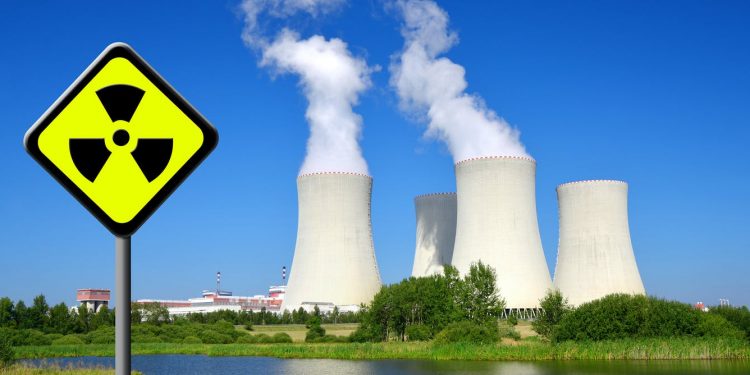The Institute for Energy Security (IES) has noted with concern government’s plan to switch its energy base-load— the permanent minimum load that a power supply system is required to deliver— from the Akosombo and Kpong hydropower systems to nuclear.
The government is seeking to introduce nuclear into the country’s energy mix, at a time when many countries around the world including Germany, Spain, Portugal, Belgium, Greece, and Italy; have either shutdown, or are in the process of pulling the plugs off nuclear plants because of complicated relationships with nuclear power.
The institute sees the push for nuclear power as backward, given that times have changed to favor solar and wind energies, instead of nuclear power, based on economics, safety and security risks, and investment hurdles.
Government argues that the establishment of a nuclear plant will guarantee the provision of regular and cheap power to push the nation’s industrialization agenda. However, the IES finds government’s claim as flawed, and does not reflect recent changes in the global power space.
IES’ analysis based on time to build, costs per kilowatt-hour, investment uptake and risk in relation to renewable sources of energy, finds that nuclear energy— once thought of as the primary answer to the world’s renewable energy drive, is today presenting itself as unfavorable in comparison to solar and wind alternatives.
Data from the U.S. Energy Information Administration (EIA) and financial advisory and asset management firm Lazard, have revealed that generating electricity from wind and solar is more economical than nuclear. Trend analysis based on Lazard’s Levelized Cost of Energy (LCOE) between 2010 and 2019 has shown that new unsubsidized wind and solar power are cheaper than some already running resources like coal, nuclear, and some gas.
For instance, Lazard’s data shows an unsubsidized utility scale solar power plant generating electricity at a cost between 3.6 and 4.4 cents per kilowatt-hour (¢/kWh), with mean value of 4.0 ¢/kWh. Meanwhile, nuclear can generate unsubsidized power at rates between 11.8 and 19.2 cents per kilowatt-hour (¢/kWh), with mean value of 15.5 ¢/kWh, according to Lazard. Between 2010 and 2019, the cost per megawatt-hour of nuclear has risen by 61 percent, while utility scale solar power has fallen by approximately 84 between same periods.
The dramatic historical LCOE decline of utility-scale solar PV and wind is in light of material declines in the pricing of system components (turbines, panels, inverters, etc.) and improvements in efficiency, among other factors.
The U.S. Energy Information Administration (EIA) defines LCOE as the average revenue per unit of electricity generated that would be required to recover the costs of building and operating a generating plant over its assumed lifetime. LCOE is often cited as a convenient summary measure of the overall competiveness of different generating technologies. Key inputs to calculating LCOE include capital costs, fuel costs, fixed and variable operations and maintenance (O&M) costs.
One other concern about renewables had been the variable nature of these energy resources, particular wind and solar. However, research have proven that it is feasible today, to have an all-renewable electric grid. The bit about renewable energy’s intermittency and dispatchability have long been solved, with the introduction of diverse forms of energy storage such as batteries, pump storages, and chemical technologies like hydrogen. As a result, wind and solar have become highly dispatchable with storage, making it a baseload source of energy.
In terms of time taken to build the two different facilities, Lazard finds that utility-scale solar takes nearly 9 months to complete, while nuclear may take nearly 69 months to construct. This means, when deciding to build solar versus nuclear power facility, a developer can bring online solar power in substantially less time and at much lower cost than a single nuclear project.
The construction delays are a big factor behind the rising cost of nuclear. The 2017 World Nuclear Industry Status Report had it that of the 53 reactors under construction in mid-2017, 37 were behind schedule. That 8 of those projects had been in progress for a decade or more, and 3 of those have been under construction for more than 30 years.
The other key factor boil down to safety and security of nuclear facilities. The nuclear industry has been shaped in many ways by its plants accidents, in terms of both cost and casualties. Serious nuclear power plants accidents including the 1986 catastrophic Chernobyl power station explosion in Ukraine, the 2011 Fukushima Daiichi plant disaster in Japan, and the SL-1 accident in 1961, have cast a shadow over the sector. Apart from these major incidents, there have been several life-threatening incidents recorded from numerous nuclear plants and facilities across the globe.
Additionally, the hurdles to investment in new nuclear projects in even advanced economies are daunting. Securing investment in new nuclear plants now require more intrusive policy intervention given the very high cost of projects and unfavourable recent experiences in some countries.
In summary, nuclear is expensive, takes too long a time to build, risky, and faces investment hurdles; compared to solar and wind power. Therefore, if the idea is about looking for power sources that offers a good opportunity to lower the cost of power for purpose of industrialization, then the choice of nuclear is wasteful and wrongly adviced.
More to the point, a comprehensive modelling of Ghana’s energy sources would reveal that it can satisfy Ghana’s electricity demands throughout the year with just a combination of renewables, hydropower, and battery storages.








